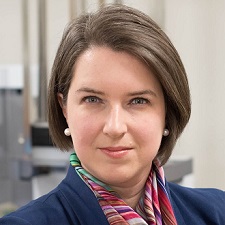Single-cell genomics dissection of common immune networks driving autoimmunity
General Audience Summary
Dr. Villani will be leveraging the power of new state-of-the-art single-cell genomics and immunology technologies to identify the type and the characteristic of each single cell from blood and tissue samples from healthy individuals and people with lupus, multiple sclerosis, rheumatoid arthritis, and type 1 diabetes, as well as cancer patients treated with immunotherapy and, later, diagnosed with immune-related adverse events that mimic clinical features of autoimmune disease presentations. By comparing the composition of cell types and the states of the cells between tissues and blood specimens obtained from different diseases, she will be able to identify shared biological processes and pathways that could be targeted for therapeutic potential.
Scientific Abstract
Most autoimmune diseases (AID) are the results of multiple genetic and environmental risk factors contributing to disease development, but the precise mechanisms resulting in disease pathogeneses remain unknown, resulting in limited treatment solutions. Interestingly, genetic studies comparing the genetic makeup of patients with AIDs and controls have discovered that patients with different autoimmune diseases share some same genetic risk factors. These genetic risk factors have been associated with impacting different biological mechanisms resulting in a break from immune homeostasis. This suggests that there might some common biological pathways contributing to different AIDs that could be harnessed as the next generation of therapeutic target that could be beneficial to patient with different diseases. Nonetheless, to achieve such promising therapeutic potential, the precise cell identity that is affected by these genetic variants and likely involved in promoting disease pathogeneses are not yet known. We hypothesize that if we analyze AID tissue samples, there will be specific groups of culprit cells that may be enriched for these defective biological pathways driven by these genetic risk factors. The challenge remained that we needed the technologies to be able to identify every single cell making-up healthy and disease tissues using unbiased approaches. To overcome this hurdle, our proposal will be leveraging the power of new state-of-the-art technologies called single-cell genomics that can precisely achieve this. Singlecell genomics combines the comprehensive nature of genomics with the microscopic resolution required to reveal distinct insights in the molecular make-up of every single cell comprised in healthy and pathological tissues (see background section for more information). Using these technologies, we analyze blood and tissue samples from patients with lupus nephritis, multiple sclerosis, rheumatoid arthritis, Crohn’s disease, as well as Type I diabetes. We will leverage integrative computational analyses and modeling approaches to identify all culprit cells making-up every disease tissue. Furthermore, by comparing the composition of culprit cells between tissues obtained from different diseases, we will be able to nominate groups of culprit cells shared between diseases that could have therapeutic potential. We will subsequently use tissue imaging analyses to validate the existence of these cells across different disease tissues. Finally, patient blood analyses will be done in parallel to assess whether the culprit cells found in tissues can also be tracked in blood. This would enable potentially developing to biomarker and diagnostic tools moving forward through less-invasive procedures that tissue biopsy.In addition to studying samples from 5 different AIDs, we will use the same experimental and computational approaches to interrogate tissues from cancer patients treated with immunotherapy that are developing side JDRF Strategic Research Agreement (SRA) – Single-cell genomics dissection of common immune networks driving autoimmunity JDRF, LRA, & NMSS Joint RFA: Decoding Immune Mediated Diseases – Novel Approaches for Therapeutic Insights (Strategic Research Agreements) – Page 10 of 30 effects mimicking AIDs being studied. Indeed, immunotherapy breakthroughs have launched a new era in cancer treatment, these new therapies “waking up” the immune system can have dangerous side effects. These immune related adverse events (irAEs) affect nearly every organ system, ranging widely from minor rashes and fevers to severe gastrointestinal complications like colitis, as well as deadly heart inflammation issues. Fascinatedly, in many respects, these irAEs resemble AIDs such as inflammatory bowel disease, and rheumatoid arthritis. In light of the fact that these patients do not have any family history of AIDs, this suggest that these immunotherapies are triggering cascades of unknown events that are tilting the natural mechanisms of the immune system, which normally keep our human body healthy, towards a state promoting autoimmunity. We will be integrating with our AID single cell analyses data generated from samples of patients diagnosed with irAEs. Studying irAEs in parallel to our AID samples represent an exquisite opportunity to study the early mechanisms leading to AODs, which could result in identifying novel natural druggable targets with immunosuppressive potential.




